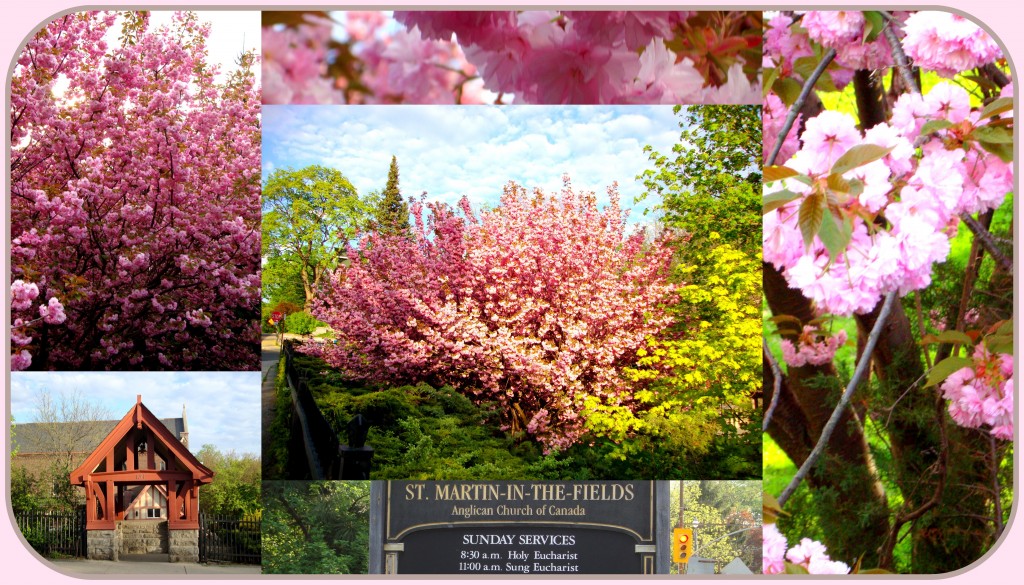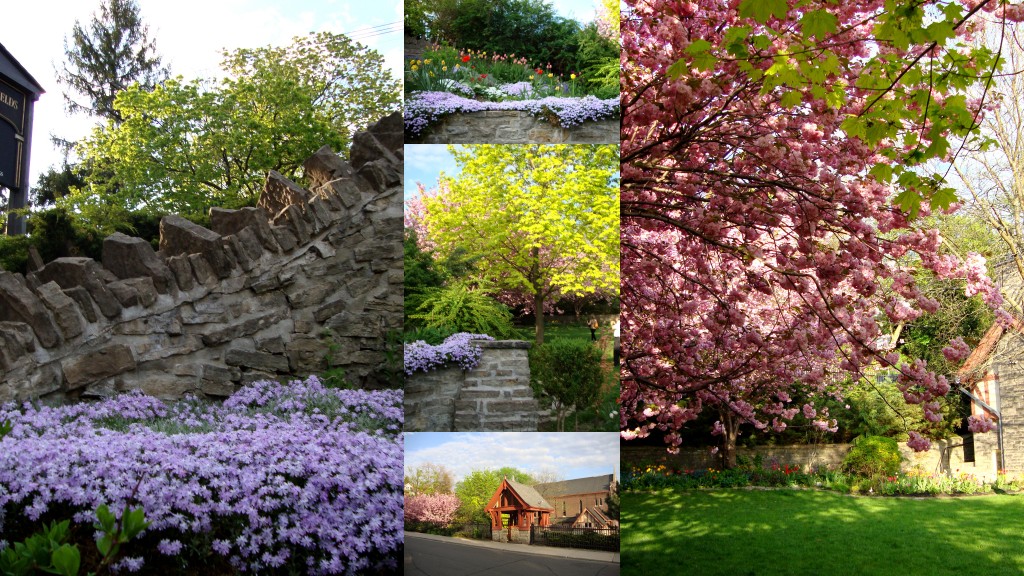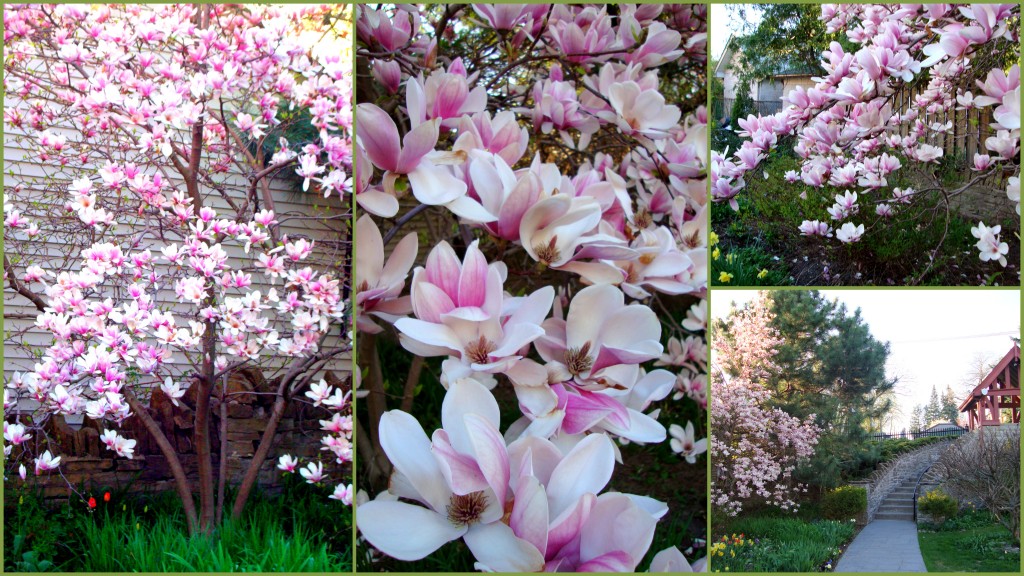
“The many great gardens of the world, of literature and poetry, of painting and music, of religion and architecture, all make the point as clear as possible: The soul cannot thrive in the absence of a garden. If you don’t want paradise, you are not human; and if you are not human, you don’t have a soul.” (Thomas Moore)

In this hectic and busy world we live in, a garden provides a sacred space for the renewal of our bodies, minds, souls and spirits. Although I enjoy my own garden at home, the garden featured in this post is one very close to my home. It is the church garden at St Martin-in-the-Fields in Toronto. The church itself is a sanctuary for tired souls and spirits but the garden is in its own special way a sanctuary. I haven’t seen a church garden anywhere as beautiful as this one. It’s one of my favorite places to be close to Nature.

The garden at St. Martin’s is especially glorious in the spring and I was there two weeks ago enjoying myself in the garden and taking these images. I wasn’t the only one doing this. The flowering Crabapple blossoms were out and many passers-by couldn’t resist their beauty. As part of our human condition, we are always looking for beauty. In St Augustine’s own words: “The soul is weighed in the balance by what delights her. Delight or enjoyment sets the soul in her ordered place. Where the delight is, there is the treasure.” I always come away from my visits there in a clearer space within myself and more delighted.

St Martin-in-the-Fields is located at 151 Glenlake Ave. in Toronto. There is a church in England with the same name. I was fortunate to visit that church when I visited England. However, they didn’t seem to have a garden. St Martin’s in London, England, is in the heart of the city. Below is a short history of Martin of Tours – the saint.

Saint Martin of Tours (Latin: Martinus), (born 316 or 317; died November 11, 397) was a native of Sabaria, Pannonia. His father was a senior officer in the Roman army. Martin was named after Mars, the god of war, meaning `the brave, the courageous’. The family moved to Pavia in Italy. When he was 15, the son of an officer, he had to join the army himself. He was stationed in Gaul and later became a monk in the region of Poitiers.
While Martin was still a soldier he experienced the vision that became the most-repeated story about his life. He was at the gates of the city of Amiens with his soldiers when he met a scantily dressed beggar. He impulsively cut his own military cloak in half and shared it with the beggar. That night he dreamed that Jesus came to him and returned the half cloak Martin had shared with him. He heard Jesus say to the angels: “Here is Martin, the Roman soldier who is not baptized; he has clad me.” When Martin woke his cloak was restored.
The miraculous cloak was preserved as a relic, and entered the relic collection of the Merovingian kings of the Franks. The Latin word for “short cloak”, cappella in Latin, was extended to the people charged with preserving the cloak of St. Martin, the cappellani or “chaplains” and from them was applied to the royal oratory that was not a regular church, a “chapel”. The dream had such an impact on Saint Martin that he was baptised the next day and became a Christian. He decided to leave the army and became a monk near the city of Tours. (religion facts.com)

natural altar – Great Spirit’s real shrine. Years later I discovered that this path of going into Nature, bonding deeply with it, and seeing Spirit within Nature – God, Goddess, and Great Spirit – was humanity’s most ancient, most primordial path of spiritual cultivation and realization.” – John P. Milton, Sky Above, Earth Below
Some of you may want to visit our own St Martin’s church here in Toronto after seeing the pictures and hearing a little bit about St. Martin of Tours. The garden is always beautiful but especially in Spring.
“I love spring anywhere, but if I could choose I would always greet it in a garden.”―
